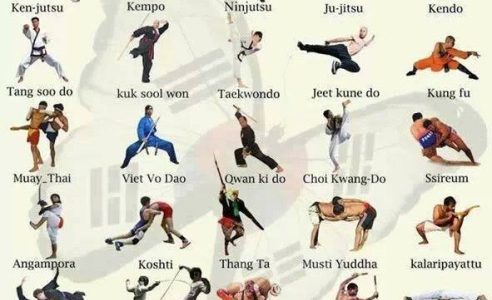The Advancement And Historic Importance Of Martial Arts Across Various Societies
The Advancement And Historic Importance Of Martial Arts Across Various Societies
Blog Article
Writer-Padilla Ebsen
Martial arts have a remarkable history that spans centuries and continents. You may find it fascinating how ancient techniques like Shuai Jiao and Kalaripayattu prepared for modern battle strategies. These self-controls not just stress physical abilities but likewise reflect the cultures that birthed them. As you explore their development, consider just how globalization has changed these traditional kinds right into crossbreed styles. What influences do you think have shaped today's martial arts landscape?
Ancient Martial arts: The Structures of Combat
As you delve into the world of old martial arts, you'll discover the abundant foundations that formed combat strategies across societies. Very early practices focused on Self-Defense and survival, usually incorporating strikes, hurting, and weapons.
In old China, for instance, methods like Shuai Jiao stressed throws and joint locks, while India's Kalaripayattu showcased agility and fluid activity. Japanese samurai established Kenjutsu, a refined swordsmanship that highlighted technique and technique.
These martial arts served not just for fight but also as a means of personal advancement, instilling worths like regard and determination. The blending of these strategies over time laid the groundwork for the varied martial arts you see today, each mirroring the distinct philosophies and requirements of its society.
The Cultural Influence on Martial Arts Development
While martial arts often show the functional demands of a culture, they additionally symbolize the cultural worths and beliefs of their origins. When you discover various martial arts, you'll notice just how they're influenced by religious beliefs, philosophy, and social norms.
As what is chi energy in martial arts , the focus on regard and self-control in Japanese martial arts stems from Zen Buddhism and samurai culture. On the other hand, Brazilian Jiu-Jitsu promotes versatility and technique, shaped by the demand for efficiency in a varied, modern setting.
You might find that the rituals, attires, and training approaches show a neighborhood's background and identity. By recognizing these social influences, you grow your admiration of martial arts and their function fit human experiences across the globe.
Modern Adaptations and the Globalization of Martial arts
Martial arts have changed dramatically in current years, adapting to modern society and global influences. https://noosatoday.com.au/sport/02-02-2023/karate-kids-kick-the-year-off-with-vitamin-sea/ 'll see that traditional forms have blended with contemporary techniques, creating hybrid styles like MMA. These adjustments cater to diverse target markets, making martial arts accessible and appealing globally.
With the surge of social media and digital systems, you can locate tutorials and competitors from all edges of the globe, breaking geographical obstacles. This globalization has resulted in a common admiration for numerous self-controls, from Brazilian Jiu-Jitsu to Taekwondo.
As you involve with these arts, you'll understand they're not just about battle; they advertise physical fitness, technique, and psychological wellness.
Inevitably, modern adjustments have enhanced the martial arts landscape, making it a vibrant and evolving practice.
Conclusion
In checking out the background and development of martial arts, you reveal an interesting blend of techniques, cultures, and viewpoints. From old disciplines like Shuai Jiao and Kalaripayattu to the modern-day versatility seen in mixed martial arts, martial arts mirror humanity's quest for Self-Defense and personal growth. As you engage with these practices, you not just get skills yet likewise a deeper admiration for the diverse practices that form our world today. So, continue your journey and welcome the art of combat!
